The US and the EU are weighing new tariffs on Chinese steel and aluminum as part of a bid to fight carbon emissions and global overcapacity, people familiar with the matter said.
The move would mark a novel approach, as the US and the EU would seek to use tariffs — usually employed in trade disputes — to further their climate agenda.
US aluminum and steel producers climbed in extended trading, while in Hong Kong, Aluminum Corp of China (中國鋁業) and China Hongqiao Group Ltd (中國宏橋集團) slipped.
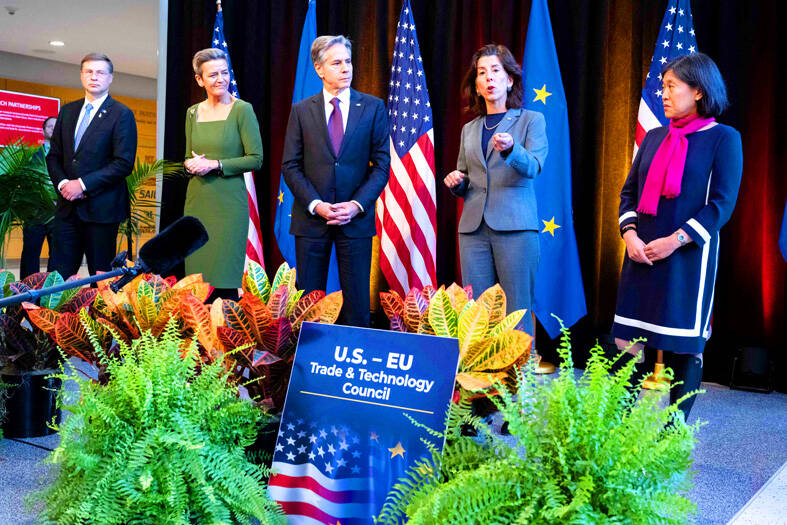
Photo: AFP
The idea, generated within US President Joe Biden’s administration, is still in an initial phase and has not been formally proposed, said the people, who asked not to be identified as the discussions are not public.
An agreement with the EU, including specifics on how to identify thresholds for applying tariffs, is not likely until late next year at the earliest, one of the people said, adding that even that timeline was optimistic.
The new framework, which builds on a related US-EU agreement last year, is mainly aimed at China, the world’s biggest carbon emitter and producer of steel and aluminum, as well as other large polluting nations, the people said.
The tariff plan would likely deepen divisions between Beijing and Washington, particularly at a time when the two countries have committed to working together to fight climate change.
However, talks between the US and the EU to jointly address the climate crisis are a positive sign for a relationship that is again suffering trade irritants, including Biden’s signature climate law that European countries say discriminates against their industries.
Other countries have expressed interest in joining the talks, but the new framework would likely not include them at first. That could mean steel and aluminum imports from Japan and others risk being targeted by new duties.
However, the goal is to open the deal to other countries as quickly as possible, as long as they can meet the agreement’s ambitions, one person familiar with the plans said.
It is unclear what legal authority the Biden administration would use to implement new tariffs. A person familiar with the matter said that question is still being worked out internally and in talks with the EU, as well as with industry representatives and the US Congress.
The White House is also talking to lawmakers about potential new authorities, the person added.
US Trade Representative (USTR) Katherine Tai (戴琪) and her team presented the idea to European Commissioner for an Economy that Works for People Valdis Dombrovskis and others in Prague in late October.
EU officials raised several questions at the time, including regarding the legality and compatibility with WTO rules, as well as with the bloc’s internal carbon pricing mechanism, people familiar with the talks said.
USTR General Counsel Greta Peisch gave the US presentation in Prague and is leading the charge from Washington, one person said.
A spokesperson for USTR declined to comment.
The climate-focused trade effort by the US and the EU was first raised in October last year, when the two sides resolved a key dispute over steel and aluminum tariffs that had been imposed by former US president Donald Trump on national security grounds.
One approach for the potential new tariffs might be to convert an existing investigation under Section 232 of the US Trade Expansion Act — which served as the underlying rationale for Trump’s duties on European steel and aluminum in 2018 — into a new inquiry that targets carbon emissions and overcapacity.
That would give the White House legal cover to move forward without having to wait for a new probe to conclude, another person said.
US officials are also still deliberating the tariff rate, or band of tariff rates that would be applied to other countries, and the US has told EU officials that they would like the agreement to be legally binding, the people said.
For the Biden administration, the first-of-its-kind agreement would be one element of what the White House describes as its worker-centric trade policy, as it focuses on defending key industries and their workers in the US and Europe.
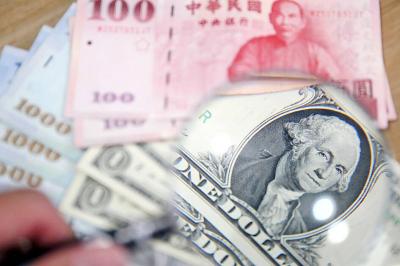
The US dollar was trading at NT$29.7 at 10am today on the Taipei Foreign Exchange, as the New Taiwan dollar gained NT$1.364 from the previous close last week. The NT dollar continued to rise today, after surging 3.07 percent on Friday. After opening at NT$30.91, the NT dollar gained more than NT$1 in just 15 minutes, briefly passing the NT$30 mark. Before the US Department of the Treasury's semi-annual currency report came out, expectations that the NT dollar would keep rising were already building. The NT dollar on Friday closed at NT$31.064, up by NT$0.953 — a 3.07 percent single-day gain. Today,
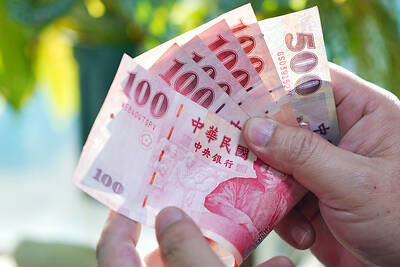
‘SHORT TERM’: The local currency would likely remain strong in the near term, driven by anticipated US trade pressure, capital inflows and expectations of a US Fed rate cut The US dollar is expected to fall below NT$30 in the near term, as traders anticipate increased pressure from Washington for Taiwan to allow the New Taiwan dollar to appreciate, Cathay United Bank (國泰世華銀行) chief economist Lin Chi-chao (林啟超) said. Following a sharp drop in the greenback against the NT dollar on Friday, Lin told the Central News Agency that the local currency is likely to remain strong in the short term, driven in part by market psychology surrounding anticipated US policy pressure. On Friday, the US dollar fell NT$0.953, or 3.07 percent, closing at NT$31.064 — its lowest level since Jan.
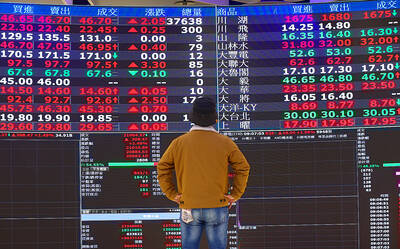
The New Taiwan dollar and Taiwanese stocks surged on signs that trade tensions between the world’s top two economies might start easing and as US tech earnings boosted the outlook of the nation’s semiconductor exports. The NT dollar strengthened as much as 3.8 percent versus the US dollar to 30.815, the biggest intraday gain since January 2011, closing at NT$31.064. The benchmark TAIEX jumped 2.73 percent to outperform the region’s equity gauges. Outlook for global trade improved after China said it is assessing possible trade talks with the US, providing a boost for the nation’s currency and shares. As the NT dollar
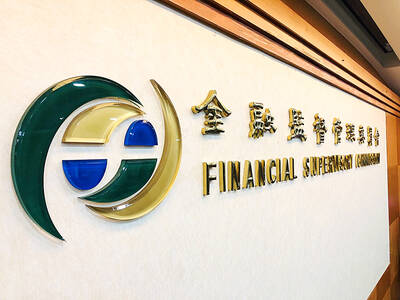
The Financial Supervisory Commission (FSC) yesterday met with some of the nation’s largest insurance companies as a skyrocketing New Taiwan dollar piles pressure on their hundreds of billions of dollars in US bond investments. The commission has asked some life insurance firms, among the biggest Asian holders of US debt, to discuss how the rapidly strengthening NT dollar has impacted their operations, people familiar with the matter said. The meeting took place as the NT dollar jumped as much as 5 percent yesterday, its biggest intraday gain in more than three decades. The local currency surged as exporters rushed to